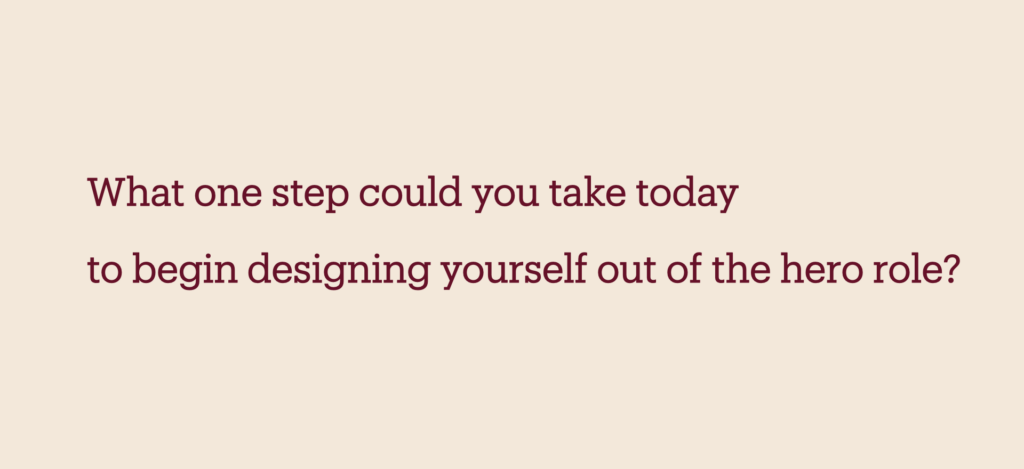The moment your mobile rings outside work hours, you know exactly who it is and why they’re calling. Another crisis only you can handle. Another fire only you can extinguish.

The pattern repeats with such regularity that it feels normal. You’ve become the organisational hero—the person everyone depends on when things go wrong.
The data tells a sobering story. According to Gallup, 76% of employees experience burnout at least sometimes, with the number significantly higher for those in the “always-on” hero position. This pattern creates a dual vulnerability: organisations become fragile, and leaders become exhausted.
The hero pattern emerges gradually. First, you solve a complex problem effectively. Then, you become the default solution for similar issues. Eventually, your expertise creates an unintentional dependency where team members stop developing their own problem-solving capabilities.
Modern organisational theory suggests this dependency cycle actively undermines the resilience needed in today’s complex business environment. When systems rely heavily on individual expertise rather than distributed knowledge, they become inherently vulnerable.
Consider Buurtzorg, the Dutch healthcare organisation that eliminated middle management entirely. Their self-managing team structure distributes decision-making authority across the organisation rather than concentrating it in heroic leaders. The result? Higher patient satisfaction, lower costs, and dramatically reduced burnout among staff.
The Architect’s Alternative
The architect-leader approaches organisational challenges differently. Rather than rushing to solve each problem personally, they ask:
- “What system allowed this problem to emerge?”
- “How can we redesign that system to prevent similar issues?”
- “Who needs to develop capability to manage this independently?”
This approach requires patience and restraint. It means watching people struggle through problems you could solve in minutes. It means investing time in documentation and processes when the crisis feels urgent.
The transition from hero to architect involves several practical shifts:
From Expert to Coach
Heroes provide answers. Architects ask questions.
When team members bring problems, resist the urge to offer immediate solutions. Instead, ask “What approach have you considered?” or “What information would help you decide?” This simple shift begins transferring problem-solving responsibility back where it belongs.
A manager at Morning Star, the world’s largest tomato processor, described their transition: “I had to sit on my hands for six months. It was the hardest thing I’ve ever done professionally—and the most important.”
From Reactive to Preventative
Heroes respond to emergencies. Architects design systems that prevent them.
Dedicate time each week specifically for preventative work. Review recurring issues and trace them to their systemic roots. Create decision trees, checklists, or standard operating procedures that allow others to handle these situations independently.
The NHS experimented with this approach in several trusts, implementing standard protocols for common scenarios. Departments using these systems reported 32% fewer escalations to senior leadership and higher staff confidence.
From Individual to Institutional Knowledge
Heroes keep critical knowledge in their heads. Architects embed it in the organisation.
Document not just what to do but why certain approaches work. Create accessible knowledge bases that allow team members to solve problems independently. Recognise and reward contributions to these knowledge resources.
Spotify’s engineering culture demonstrates this principle well. Their squad model distributes authority while maintaining alignment through lightweight documentation of decisions and approaches.
The Transition Path
Moving from hero to architect doesn’t happen overnight. The journey typically follows these stages:
- Awareness – Recognising the dependency pattern and its costs
- Boundary-setting – Creating clear guidelines for escalation
- Capability-building – Developing others’ problem-solving skills
- System design – Creating frameworks that prevent issues
- Culture change – Reinforcing new patterns until they become the norm
The most challenging aspect is managing the temporary performance dip that often accompanies this transition. Teams accustomed to escalating issues may initially struggle with their new autonomy. Systems may need refinement as edge cases emerge.
This dip tests the leader’s resolve. Many revert to hero mode at the first sign of trouble, undermining the very transformation they’re trying to create.
The Sustainable Result
Leaders who successfully navigate this transition describe a profound shift. One executive noted: “I used to measure my value by how many problems I solved. Now I measure it by how many problems never reach my desk.”
Organisations with architect-leaders demonstrate greater resilience during leadership transitions. They adapt more readily to changing conditions. They scale more effectively as they grow.
Perhaps most importantly, they create environments where people thrive rather than merely survive. Team members develop greater competence and confidence. They experience the satisfaction of solving meaningful problems rather than merely executing instructions.
The shift from firefighter to architect may be the most significant transformation a leader can make—not just for their own sustainability, but for the long-term health of the organisation they serve.
What one step could you take today to begin designing yourself out of the hero role?